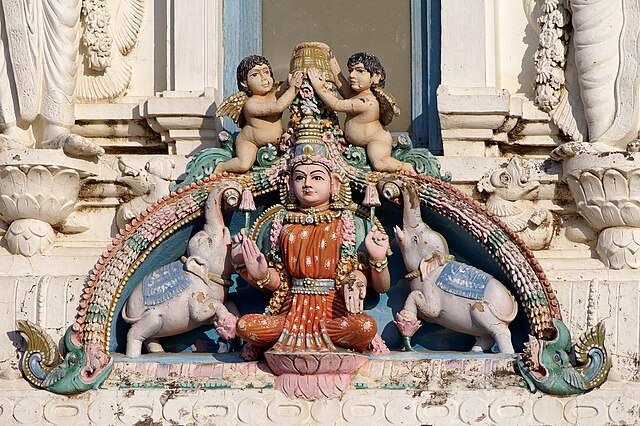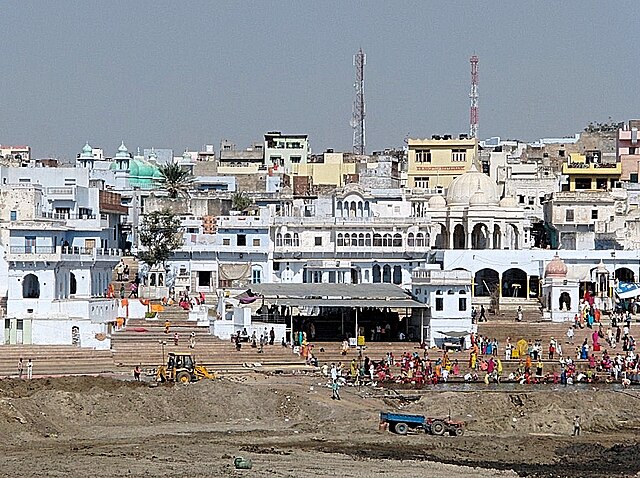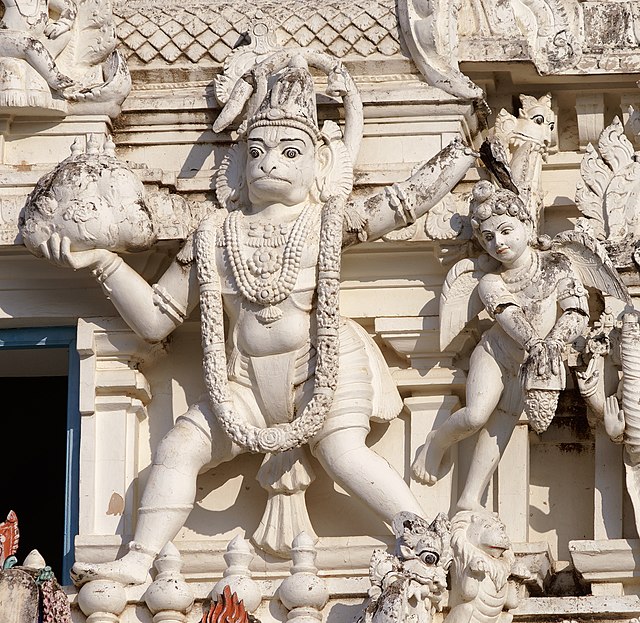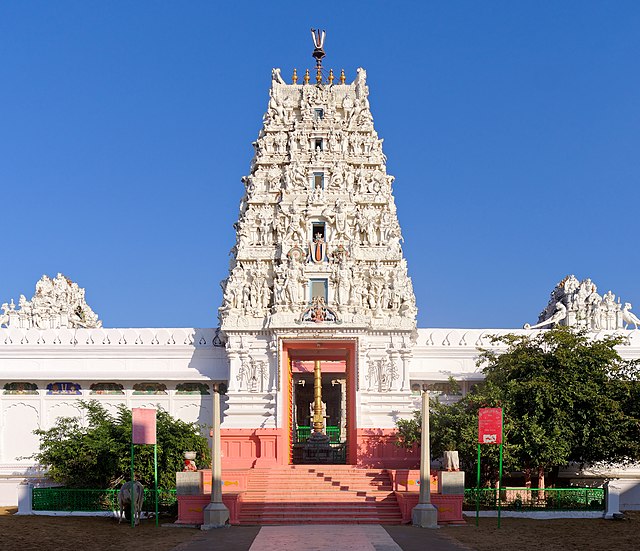Nestled in the heart of Rajasthan’s Thar Desert, Pushkar Temple stands as one of India’s most revered spiritual destinations. This ancient shrine, dedicated to Lord Brahma, holds the unique distinction of being the world’s only temple where Brahma is worshipped as the primary deity. But what makes this temple so extraordinary that pilgrims travel thousands of miles just to catch a glimpse of its sacred sanctum?
The story of Pushkar Temple isn’t just about religious devotion—it’s a fascinating blend of mythology, history, and architectural brilliance that has captivated visitors for centuries. From the shimmering waters of Pushkar Lake to the bustling ghats that surround it, every corner of this holy town tells a tale that’s both mystical and deeply rooted in Indian culture.
What Makes Pushkar Temple So Special?
Have you ever wondered why there’s only one temple dedicated to Brahma, the creator of the universe according to Hindu mythology? The answer lies in a captivating story that combines divine love, jealousy, and an eternal curse that changed the course of Hindu worship forever.
The Legend Behind Lord Brahma’s Only Temple
The uniqueness of Pushkar Temple stems from an ancient legend that explains why Brahma, despite being one of the trinity of Hindu gods, has so few temples dedicated to him. According to Hindu scriptures, Brahma was performing a yajna (fire sacrifice) at Pushkar when his wife, Goddess Saraswati, arrived late to the ceremony. Impatient and unable to wait any longer, Brahma married Gayatri, a local cowherd’s daughter, to complete the ritual.
When Saraswati finally arrived and discovered what had happened, her fury knew no bounds. In her anger, she cursed Brahma, declaring that he would be worshipped only at Pushkar and nowhere else in the world. This divine curse is why Pushkar Temple remains the sole major shrine dedicated to Lord Brahma, making it an incredibly significant pilgrimage site for Hindus worldwide.
Architectural Marvel of Ancient India
Beyond its mythological importance, Pushkar Temple showcases the finest examples of traditional Indian temple architecture. The temple’s design reflects the rich cultural heritage of Rajasthan, with its intricate marble work, silver-plated doors, and stunning red spire that pierces the desert sky. The craftsmanship visible in every pillar and carving speaks to the dedication of ancient Indian artisans who poured their hearts into creating this masterpiece.
History and Mythology of Pushkar Temple

The historical timeline of Pushkar Temple is as fascinating as its mythological origins. Archaeological evidence suggests that the site has been a place of worship for over 2,000 years, though the current structure has undergone several renovations and reconstructions throughout its existence.
The Curse of Goddess Saraswati
The central mythology surrounding Pushkar Temple revolves around the divine drama between Brahma and his wives, Saraswati and Gayatri. This story isn’t just a tale of marital discord—it represents deeper philosophical concepts about time, duty, and the consequences of impatience. The curse that Saraswati placed upon Brahma serves as a reminder that even gods must face the consequences of their actions.
Interestingly, both goddesses are said to reside in Pushkar. While Saraswati sits atop the Ratnagiri Hill, refusing to descend to the temple, Gayatri is believed to bless devotees who visit the main shrine. This unique arrangement creates a spiritual dynamic unlike any other temple in the world.
Historical Significance Through the Ages
Throughout history, Pushkar Temple has witnessed the rise and fall of numerous dynasties, each leaving their mark on this sacred site. The temple has been mentioned in various ancient texts, including the Padma Purana and the Vayu Purana, establishing its importance in Hindu religious literature.
Medieval Period Renovations
During the medieval period, various Rajput rulers took it upon themselves to maintain and renovate the temple. The Chauhan dynasty, in particular, played a crucial role in preserving the temple’s sanctity during times of political upheaval. These renovations weren’t just about maintaining the structure—they were acts of devotion that ensured the temple remained a beacon of faith for future generations.
British Era Documentation
The British colonial administration documented Pushkar Temple extensively, recognizing its cultural and religious significance. Their records provide valuable insights into the temple’s condition and the rituals practiced during the 19th and early 20th centuries. These historical documents help us understand how the temple has evolved while maintaining its core spiritual essence.
Architecture and Design of Pushkar Brahma Temple
The architectural splendor of Pushkar Temple is a testament to the ingenuity of ancient Indian builders and artists. Every element of the temple’s design has been carefully planned to create an atmosphere of divine presence and spiritual tranquility.
Traditional Rajasthani Temple Architecture
The temple follows the classic North Indian temple architecture style, known as Nagara style, but with distinctive Rajasthani influences. The most striking feature is the red-colored shikhara (spire) that can be seen from miles away, serving as a landmark for pilgrims approaching the holy town. The temple’s walls are constructed using red sandstone, a material abundant in Rajasthan and known for its durability against the harsh desert climate.
The temple complex includes a main sanctum (garbhagriha) where the four-faced idol of Brahma is installed, a mandapa (hall) for devotees to gather, and smaller shrines dedicated to other deities. The layout follows ancient Vastu Shastra principles, ensuring that the spiritual energy flows harmoniously throughout the structure.
Sacred Symbols and Carvings
Every inch of Pushkar Temple is adorned with intricate carvings that tell stories from Hindu mythology. The walls feature depictions of various gods and goddesses, celestial beings, and mythical creatures. These aren’t mere decorations—each carving has spiritual significance and serves as a visual representation of divine teachings.
The silver-plated doors of the main sanctum are particularly noteworthy, featuring elaborate engravings that have been maintained through generations of skilled craftsmen. The lotus motifs that appear throughout the temple symbolize purity and spiritual awakening, while the geometric patterns represent the cosmic order that Brahma is believed to have created.
Religious Significance and Rituals

The spiritual importance of Pushkar Temple extends far beyond its unique status as Brahma’s only major shrine. For devout Hindus, a pilgrimage to Pushkar is considered incomplete without visiting this sacred temple and performing the prescribed rituals.
Daily Worship Practices
The temple follows a strict schedule of daily worship that has remained unchanged for centuries. The day begins before dawn with the Mangala Aarti, a prayer service that awakens the deity. Throughout the day, five main aartis are performed, each with its own significance and specific mantras.
Devotees can participate in these rituals by offering flowers, coconuts, and sweets to Lord Brahma. The prasadam (blessed food) distributed after each aarti is believed to carry the divine blessings of the creator himself. Many pilgrims time their visit to coincide with the evening aarti, which is particularly spectacular as the temple is illuminated with oil lamps and the chanting of Vedic hymns fills the air.
Special Festivals and Celebrations
Pushkar Temple comes alive during various festivals throughout the year, but two celebrations stand out for their grandeur and spiritual significance.
Kartik Purnima Fair
The most famous celebration at Pushkar Temple occurs during Kartik Purnima (the full moon day in the Hindu month of Kartik, usually falling in October or November). This festival transforms the quiet desert town into a bustling hub of spirituality and culture. Thousands of pilgrims arrive to take a holy dip in Pushkar Lake and seek blessings at the temple.
During this time, the temple remains open for extended hours, and special ceremonies are conducted throughout the day and night. The festival isn’t just about religious observance—it’s a complete cultural experience featuring folk music, dance performances, and the famous Pushkar Camel Fair that runs concurrently.
Brahma Jayanti Celebrations
Brahma Jayanti, celebrating the birth of Lord Brahma, is another significant occasion at Pushkar Temple. This festival, which falls during the bright half of the Hindu month of Chaitra, attracts devotees who believe that worshipping Brahma on this day brings special blessings for creativity, knowledge, and prosperity.
Pushkar Lake: The Sacred Water Body
No discussion of Pushkar Temple is complete without mentioning the sacred lake that gives the town its name. Pushkar Lake, formed by the tears of Lord Brahma according to legend, is considered one of the most sacred water bodies in Hinduism.
Spiritual Importance of Holy Dip
Taking a dip in Pushkar Lake is believed to cleanse devotees of their sins and grant them moksha (liberation from the cycle of birth and death). The spiritual significance of this ritual is so profound that many Hindus consider it equivalent to performing the Ashvamedha Yajna, one of the most sacred Vedic rituals.
The best time for the holy dip is during the early morning hours when the water is calm and the atmosphere is filled with spiritual energy. Pilgrims often combine this ritual with a visit to the temple, creating a complete spiritual experience that addresses both the body and soul.
52 Ghats Around the Lake
Pushkar Lake is surrounded by 52 ghats (stone steps leading to the water), each with its own significance and history. These ghats were built by various rulers and wealthy merchants over the centuries, and each tells a unique story of devotion and faith.
Some of the most famous ghats include the Brahma Ghat, where Lord Brahma himself is said to have performed his yajna, and the Gandhi Ghat, where Mahatma Gandhi’s ashes were immersed. Each ghat has its own temple or shrine, creating a spiritual circuit around the lake that devotees can follow for maximum blessings.
Best Time to Visit Pushkar Temple

Planning your visit to Pushkar Temple requires careful consideration of both climatic conditions and religious calendar events. The timing of your pilgrimage can significantly impact your overall experience.
Weather Considerations
Rajasthan’s desert climate means that temperatures can be extreme, making certain times of the year more comfortable for temple visits. The best weather conditions occur from October to March when temperatures are moderate and pleasant for outdoor activities.
During the summer months (April to June), temperatures can soar above 45°C (113°F), making temple visits challenging, especially for elderly pilgrims or those not accustomed to extreme heat. The monsoon season (July to September) brings relief from the heat but can make travel difficult due to occasional heavy rains.
Festival Seasons
While the temple is open year-round, visiting during major festivals offers a unique spiritual experience. The Kartik Purnima period (October-November) is the most popular time, but it’s also the most crowded. If you prefer a more peaceful pilgrimage experience, consider visiting during other auspicious occasions like Brahma Jayanti or during the cooler months when fewer tourists are present.
How to Reach Pushkar Temple
Getting to Pushkar Temple requires some planning, as the town is not directly connected to major transportation hubs. However, multiple options are available to suit different preferences and budgets.
By Air, Train, and Road
The nearest airport to Pushkar is Jaipur International Airport, located approximately 150 kilometers away. From Jaipur, you can hire a taxi or take a bus to reach Pushkar in about 3 hours. Many pilgrims prefer this option as it offers the fastest route to the temple.
For train travelers, Ajmer Junction is the closest railway station, situated just 15 kilometers from Pushkar. Ajmer is well-connected to major cities across India, making it a convenient option for those preferring rail travel. From Ajmer, regular bus services and taxis are available to Pushkar, with the journey taking approximately 30-45 minutes.
Road connectivity to Pushkar is excellent, with well-maintained highways connecting it to major Rajasthani cities. Many devotees choose to drive, especially those coming from nearby states, as it allows for flexibility in planning temple visits and exploring other attractions.
Local Transportation Options
Within Pushkar, most attractions including the temple are within walking distance of each other. The town is small and pedestrian-friendly, making it enjoyable to explore on foot. For those who prefer not to walk, auto-rickshaws and cycle-rickshaws are readily available at reasonable rates.
Many visitors also choose to rent bicycles, which offer an eco-friendly way to navigate the narrow streets while enjoying the local atmosphere. Horse-drawn carriages are another traditional option that adds to the cultural experience of visiting this ancient town.
Accommodation and Facilities
Pushkar offers a wide range of accommodation options to suit different budgets and preferences, from basic guesthouses to luxury heritage hotels.
Staying Near the Temple
For the most authentic pilgrimage experience, consider staying in one of the many guesthouses or ashrams located within walking distance of the temple. These accommodations often provide simple but clean rooms and vegetarian meals, perfect for devotees seeking a spiritual retreat.
Many of these establishments are run by local families who understand the needs of pilgrims and can provide valuable insights about temple timings, rituals, and local customs. Staying close to the temple also allows you to participate in early morning and late evening prayers without worrying about transportation.
Dining Options for Pilgrims
Pushkar is a completely vegetarian town, which means all restaurants and food stalls serve only vegetarian cuisine. This creates a pure environment that enhances the spiritual atmosphere of the pilgrimage. The local Rajasthani cuisine offers delicious options including dal baati churma, gatte ki sabzi, and various sweets that are perfect for offering at the temple.
Many establishments near the temple offer simple, sattvic (pure) meals that are ideal for maintaining spiritual discipline during your pilgrimage. Don’t miss trying the local specialties while respecting the town’s vegetarian traditions.
Other Attractions in Pushkar
While the Brahma Temple is the main attraction, Pushkar offers several other spiritual and cultural sites worth exploring during your visit.
Savitri Temple Trek
For those seeking adventure along with spirituality, the trek to Savitri Temple offers both. Located on a hilltop overlooking Pushkar, this temple is dedicated to Goddess Savitri (also known as Saraswati). The trek takes about 30-45 minutes and rewards visitors with panoramic views of Pushkar Lake, the town, and the surrounding desert landscape.
The temple holds special significance in the Pushkar mythology, as it’s believed to be where Goddess Saraswati retreated after cursing Brahma. The evening hours are particularly magical for this trek, as you can witness a breathtaking sunset over the Thar Desert.
Local Markets and Shopping
Pushkar’s vibrant markets offer an excellent opportunity to purchase spiritual items, handicrafts, and souvenirs. The main bazaar street is lined with shops selling everything from traditional Rajasthani textiles and jewelry to spiritual books and artifacts.
Many pilgrims purchase items for puja (worship rituals) at the temple, including flowers, incense, and offerings. The local artisans also create beautiful items inspired by the temple’s architecture and mythology, making for meaningful souvenirs of your spiritual journey.
Tips for Visiting Pushkar Temple
To make the most of your pilgrimage to Pushkar Temple, keep these practical tips in mind.
Dress Code and Etiquette
As with all Hindu temples, Pushkar Temple has certain dress code requirements that visitors must follow. Modest clothing that covers shoulders and knees is essential. Traditional Indian attire is preferred, but not mandatory—the key is to dress respectfully.
Remove your shoes before entering the temple premises and maintain silence or speak in low voices within the sanctum. Photography may be restricted in certain areas, so always ask permission before taking pictures. Remember that this is an active place of worship, so be mindful of ongoing prayers and rituals.
Photography Guidelines
While photography is generally allowed in the outer areas of the temple complex, restrictions often apply within the main sanctum. Professional photography equipment may require special permission. Always respect the privacy of other devotees and avoid using flash photography during prayer services.
The best photographs often come from capturing the temple’s exterior architecture, especially during the golden hour when the red sandstone glows beautifully in the desert sunlight. The view from Savitri Temple also offers excellent opportunities for landscape photography.
Conclusion
Pushkar Temple stands as more than just a religious site—it’s a living testament to India’s rich spiritual heritage and architectural brilliance. As the world’s only major temple dedicated to Lord Brahma, it offers visitors a unique opportunity to connect with one of Hinduism’s most important deities while experiencing the timeless traditions that have been preserved for centuries.
Whether you’re a devout pilgrim seeking spiritual fulfillment or a curious traveler interested in India’s cultural treasures, Pushkar Temple provides an unforgettable experience. The combination of ancient mythology, stunning architecture, and the serene desert setting creates an atmosphere where the divine feels tangibly close.
The temple’s significance extends beyond its religious importance—it represents the continuity of human faith and the enduring power of devotion. As you stand before the four-faced idol of Brahma and listen to the ancient chants echoing through the marble halls, you become part of a tradition that has connected countless souls to the divine for over two millennia.
Your journey to Pushkar Temple isn’t just a visit to a historical monument; it’s a pilgrimage that can transform your understanding of spirituality, culture, and the rich tapestry of human belief that continues to thrive in our modern world.
Frequently Asked Questions (FAQs)
1. Why is Pushkar Temple the only major temple dedicated to Lord Brahma?
According to Hindu mythology, Goddess Saraswati cursed Lord Brahma to be worshipped only at Pushkar after he married Gayatri during a yajna ceremony when Saraswati was late. This divine curse is why Brahma has very few temples dedicated to him worldwide, making Pushkar Temple unique and spiritually significant.
2. What is the best time of day to visit Pushkar Temple?
The temple is most peaceful during early morning hours (5:00-7:00 AM) and evening (6:00-8:00 PM) when the main aartis are performed. These times offer the most spiritual atmosphere with fewer crowds and beautiful lighting. The evening aarti is particularly spectacular with traditional oil lamps and chanting.
3. Is there an entry fee for Pushkar Temple?
No, there is no entry fee for visiting Pushkar Temple. However, donations are welcome and appreciated for temple maintenance. You may need to pay for special services like personalized pujas or offerings, but basic darshan (viewing of the deity) is completely free for all visitors.
4. Can non-Hindus visit Pushkar Temple?
Yes, Pushkar Temple welcomes visitors of all faiths and backgrounds. However, all visitors must follow the temple’s dress code and etiquette guidelines, which include modest clothing, removing shoes before entering, and maintaining respectful behavior during worship services.
5. How long should I plan to stay in Pushkar for a complete temple visit?
For a comprehensive spiritual experience, plan to stay at least 2-3 days in Pushkar. This allows time to visit the temple multiple times, take a holy dip in Pushkar Lake, trek to Savitri Temple, explore the local markets, and participate in various prayer services without feeling rushed. During festival times, you may want to extend your stay to fully experience the celebrations.

